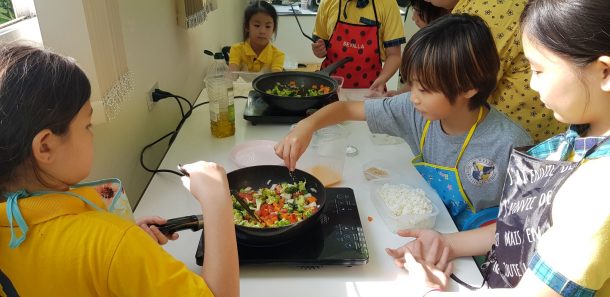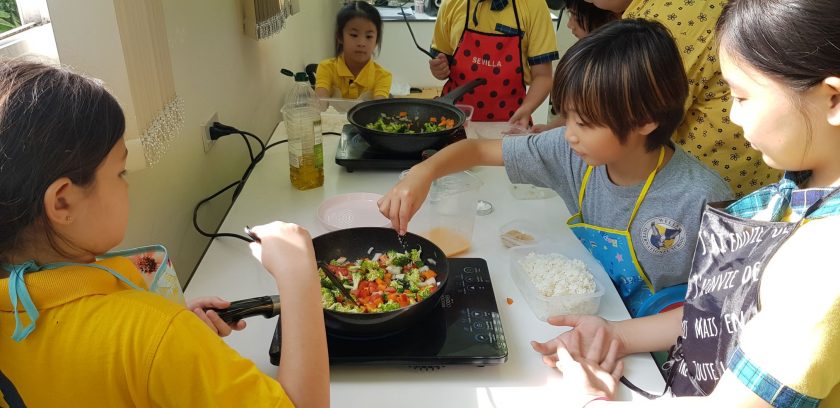Chewing on Problems in Cooking Class
An enthusiastic group of students ran up the stairs to cooking class on Thursday afternoon at Wells International School Bang Na. Aprons were donned, containers ready for anything left over and hands were washed.
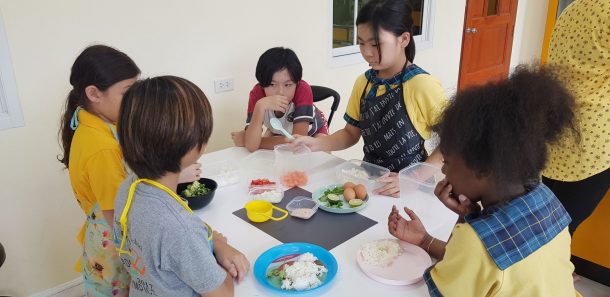
What are we Making?
Before any cooking started, students gathered around the ingredients. They got a chance to taste and discuss what they saw and recognized. This allows the picky eaters some time to observe others and taste new ingredients. “What do you think we will be making?” asked the teacher. The students answered, “Something with rice.” “Yes, what could you make with rice?” “Fried rice!”, they called out proudly. The teacher started the learning with, “Right, talk about it and decide how you are going to make it.” The students looked at the board and list of ingredients and one student remarked, “But there are no directions on the board.” “Exactly!”, smiled the teacher.
Collaborative Planning
The students then fervently started discussing the process of making fried rice. They had to negotiate and allocate roles of responsibility, while the older students used different ways to ensure that the younger members of their group were involved in the process too. Members of the groups were given roles to do, such as measuring, mixing, organizing and stirring. The older students scaffold tasks with the younger students. Some groups decided to divide the ingredients up among themselves, while another group wanted to cook all the rice together and then share the fried rice with the group.
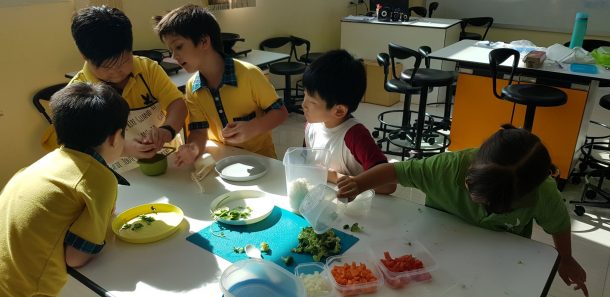
Cooking as a Team
After all the planning, organization and discussion, the students were confident enough to start cooking. The older students tackled the stove and hot pans, with the younger students standing by, helping. Everyone was invested in the success of the dish. They all enjoyed participating. The students told each other how long to fry the vegetables for and how much salt to put into the dish.
Inquiring and Going Further
Finally, the groups shared their rice among the members of the group and tasted what they had cooked. The teacher asked questions to get the students to reflect on the techniques and ingredients they used. They talked about what was delicious and what they would change if they were to cook it again. The students asked, “Could we put in other vegetables if we were to cook it at home?” This created a curiosity with the students. They will take what they have learned and to try it at home.
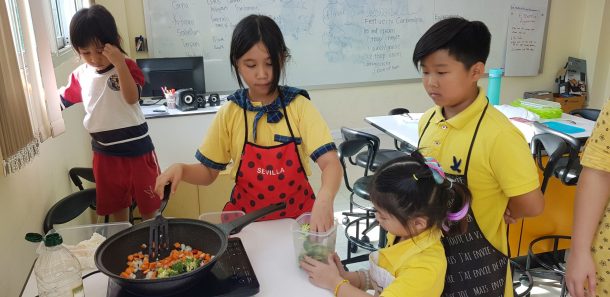
Being a Risk-Taker
In this lesson, the students were challenged to be risk-takers to try new tastes and do things that they had not done before. They were also challenged to be open-minded and be good communicators by listening to their peers, negotiating the best outcome and working with group members with different abilities. Lastly, the students were expected to reflect on their learning during the planning and implementation of the recipe. This created awareness of their strengths and weaknesses to develop. The activity was frustrating for some, creating perfect opportunities for learning, from how to handle a hot pan to how to be patient. And in the end, after all this hard work, everyone ate their fried rice, even the picky eaters were munching away at the vegetables they had to cut themselves.
